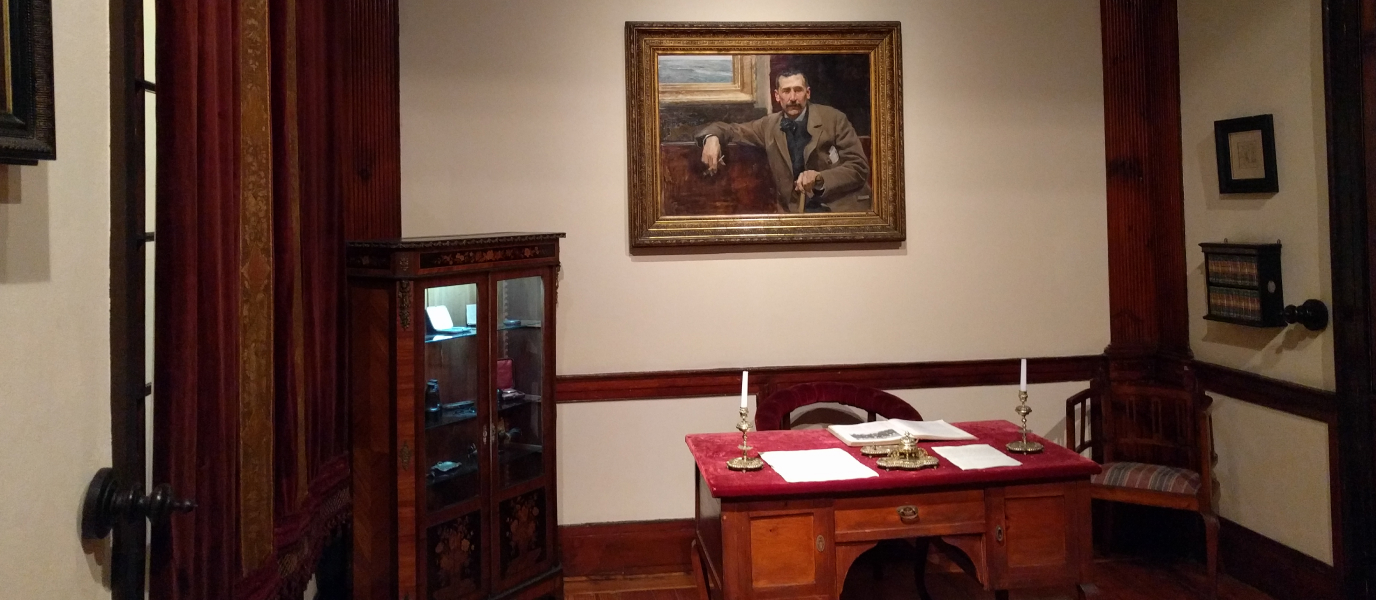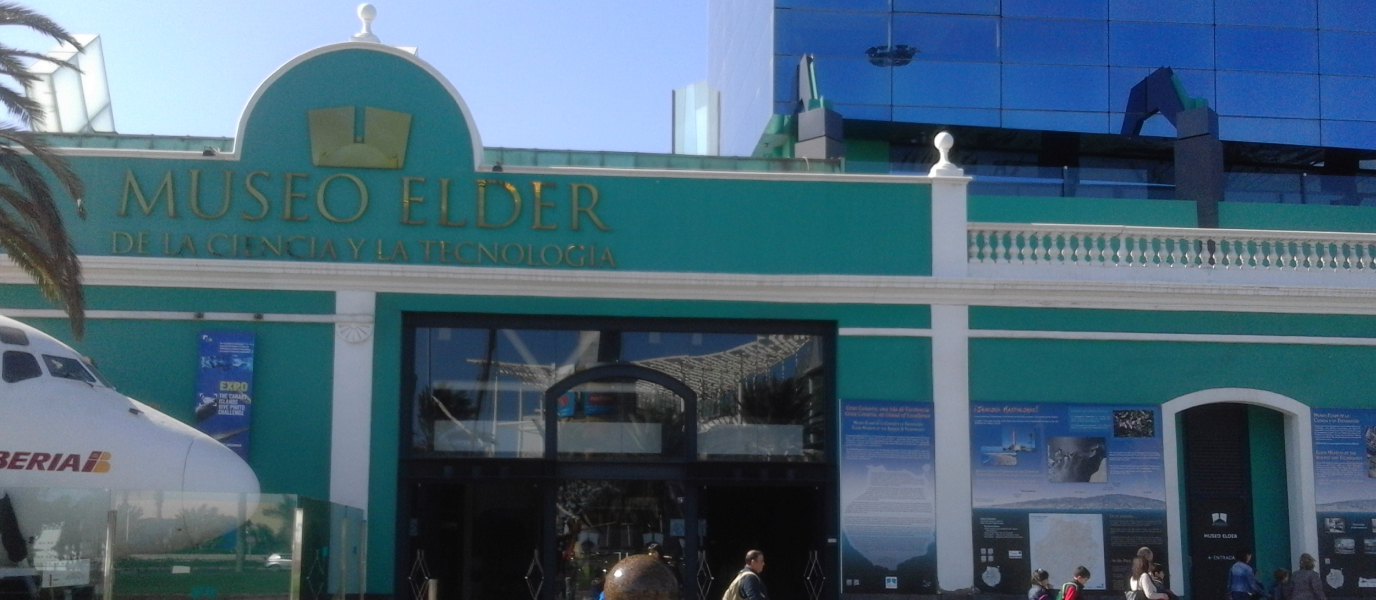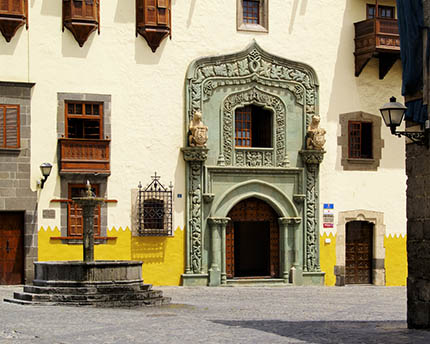Vegueta is the oldest and most important area of Las Palmas de Gran Canaria. This founding hub of the city first came to be when the army under the command of the conquistador Juan Rejón raised the settlement of Real de las Palmas in 1478, named after the palm trees surrounding the place. The entire old town of Las Palmas is in Vegueta, and it’s full of interesting places waiting to be discovered, among them the Plaza Mayor de Santa Ana complete with cathedral, and cultural spaces such as the Casa de Colón and much more. It was in a house between Vegueta and Triana that one of the most famous Spanish novelists was born: Benito Pérez Galdós. Today, his family home is now a museum preserving the memory of the writer and promoting his life’s work. It’s time to immerse yourself in the world of Gran Canaria’s most famous son.
Pérez Galdós in Las Palmas
Benito Pérez Galdós was born on 10 May 1843 at Calle Cano 33 (today it’s number 6), bringing the total number of children in the family to 10. His father was a colonel in the army and his mother was originally from Gipuzkoa in the Basque Country. The family lived in a late-18th-century mansion built in the traditional style. It was here that the young Pérez Galdós took an interest in literature, encouraged by his father’s tales of his own military experiences, particularly in the Spanish War of Independence.
Pérez Galdós attended the San Agustín school in his local neighbourhood. He grew up in a somewhat conservative society that was stuck in the past. The local press published some of his stories and ironic poetry, and in 1862 he graduated from the La Laguna Institute in Tenerife as an arts major. It is widely believed that the young writer suffered great emotional distress connected to one of his female cousins, and before long he left for Madrid to study law. He would travel throughout Spain and Europe, but Madrid would remain his home until his death in 1920.
Benito Pérez Galdós is considered one of the greatest 19th-century writers of realist novels. His refusal to stick to romanticism – instead preferring naturalism, expressiveness and taking inspiration from the reality around him – meant he would change literature completely. The Episodios Nacionales are his most famous work throughout the world – five series illustrating the history of Spain from the defeat in the Battle of Trafalgar in 1805 through to the start of the Bourbon Restoration. It is an accurately documented work presented as a novel, and undoubtedly one of Galdós’ finest pieces.
What to see in the Museo Pérez Galdós

In 1954, the Cabildo or Island Council of Gran Canaria decided to create a museum in the writer’s family home – a childhood-home-turned-museum that honours the memory of the writer by using his own belongings to give us clues to his life and character. Works to adapt the building began in 1958, and the museum opened in 1960, committed to preserving and disseminating the writer’s heritage.
A few months after Galdós passed away in his nephew’s house in Madrid, the latter offered his uncle’s possessions to the Museo Canario. These items constituted the start of the collection and were exhibited in the Museo Canario before becoming part of the Casa-Museo Pérez Galdós when it was eventually built. Among the pieces are the writer’s deathbed. In 1959, the belongings of his daughter, María Pérez Galdós Cobián, were incorporated into the collection. Such generous donations have enabled the museum to faithfully honour the figure of Galdós.
The museum was extended in 2006 to include an annex building housing new exhibition rooms, a conference hall and a library. The entire complex underwent extensive restoration in 2011 though the original structure of the house remains intact complete with two central patios, enabling you to admire the 19th-century domestic architecture of the Canary Islands.
Several of the museum’s features are worth noting:
- Painting by Sorolla. The portrait of Benito Pérez Galdós by Joaquín Sorolla dating to 1894 is one of the museum’s great treasures. The writer is seated on a bench looking peacefully at the observer, with a cigar in one hand and a cane in the other. A few years prior to completing the portrait, Sorolla had been in Paris where he had his first contact with the impressionists. Upon his return to Spain, he began working on portraits of various intellectual figures, one of which was Galdós. The painter and the writer became great friends and the museum archive includes the correspondence in which they complement one another’s work. The portrait provides a wonderful opportunity to admire the exceptional brushwork of this master of light.
- Monument by Victorio Macho. Three days after Pérez Galdós’ death, it was decided to erect a sculpture in his honour at his birthplace. The man in charge was the artist Victorio Macho. He travelled to Las Palmas in 1921 to study the monument’s proposed site. The sculpture came to the city in 1926 but was not installed at the old docks until 1930. Sadly, the action of the sea caused extensive damage to the monument and after being moved several times it was eventually taken to the museum in 2006. This was not Macho’s intention – he preferred that the ocean acted upon the sculpture until it became an inseparable part of the landscape. Today, the Monument to Pérez Galdós stands on the lower floor of the new museum building, erosion and all, and welcomes its visitors.
The reconstructions of the various rooms in which Galdós spent his life are the other main attractions. You can get a glimpse of the room where he was born, his office in the ‘San Quintín’ house in Santander or the room in Madrid where he spent his final days.
The collection is completed with musical instruments, photographs of Galdós and his acquaintances, books, art works and other items belonging to the writer. The museum lovingly preserves these objects and organises talks, exhibitions and international conferences, all to promote the life and work of Benito Pérez Galdós and keep his memory alive.







































































